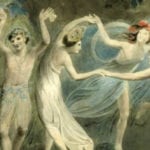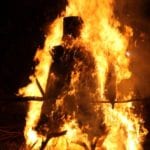 Music
Music  Music
Music  History
History 10 Less Than Jolly Events That Occurred on December 25
 Weird Stuff
Weird Stuff 10 Funny Ways That Researchers Overthink Christmas
 Politics
Politics 10 Political Scandals That Sent Crowds Into the Streets
 Weird Stuff
Weird Stuff Ten Bizarre Facts About The Doge Meme
 Our World
Our World 10 Ways Your Christmas Tree Is More Lit Than You Think
 Movies and TV
Movies and TV The 10 Coolest Stars to Set Sail on The Love Boat
 History
History 10 Things You Didn’t Know About the American National Anthem
 Technology
Technology Top 10 Everyday Tech Buzzwords That Hide a Darker Past
 Humans
Humans 10 Everyday Human Behaviors That Are Actually Survival Instincts
 Music
Music 10 Surprising Origin Stories of Your Favorite Holiday Songs
 History
History 10 Less Than Jolly Events That Occurred on December 25
 Weird Stuff
Weird Stuff 10 Funny Ways That Researchers Overthink Christmas
Who's Behind Listverse?

Jamie Frater
Head Editor
Jamie founded Listverse due to an insatiable desire to share fascinating, obscure, and bizarre facts. He has been a guest speaker on numerous national radio and television stations and is a five time published author.
More About Us Politics
Politics 10 Political Scandals That Sent Crowds Into the Streets
 Weird Stuff
Weird Stuff Ten Bizarre Facts About The Doge Meme
 Our World
Our World 10 Ways Your Christmas Tree Is More Lit Than You Think
 Movies and TV
Movies and TV The 10 Coolest Stars to Set Sail on The Love Boat
 History
History 10 Things You Didn’t Know About the American National Anthem
 Technology
Technology Top 10 Everyday Tech Buzzwords That Hide a Darker Past
 Humans
Humans 10 Everyday Human Behaviors That Are Actually Survival Instincts
10 Unusual Male Witch Trials From Europe
Between the 16th and 18th centuries, tens of thousands of people were executed for witchcraft in Europe. Then as now, witches were typically thought of as female, and most of the victims in the witch trials were women.
However, men were occasionally accused and executed for witchcraft as well. Sometimes, they were linked with a female witch. Other times, they were accused independently. In a few areas of Europe, such as Estonia and Normandy, men actually made up the majority of the accused.
10 John Fian
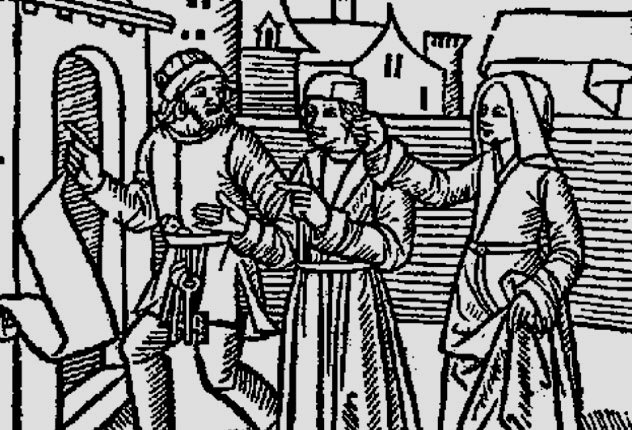
In late 1589, the Scottish king James VI traveled to Scandinavia to marry Princess Anne of Denmark. While sailing home, James and his new queen were stalled by terrible storms. Instead of bad luck, the Danish authorities blamed the weather on witchcraft, duly arresting and executing six supposed witches. Back in Scotland, some of James’s subjects were accused of a conspiracy to magically sink the king’s ship.
John Fian, a schoolteacher, was allegedly one of the plot’s ringmasters. According to the many wild legends surrounding him, Fian could fly and unlock doors by blowing on their locks. In one bizarre story, Fian asked a local boy to steal pubic hair from his sister. The hair was an ingredient for a love charm. But Fian was tricked and given cow hair, making a cow fall in love with him instead.[1]
After being taken into custody for treason and witchcraft, Fian was tortured and interrogated. He confessed that the charges were true, escaped from jail, and then ended up being tortured again. This time, Fian recanted his confession and refused to budge, even after having his nails pulled out and his legs crushed. Despite Fian’s resilience, his interrogators and King James VI weren’t convinced. Fian was strangled and burned at the stake in Edinburgh in January 1591.
9 Thomas Weir
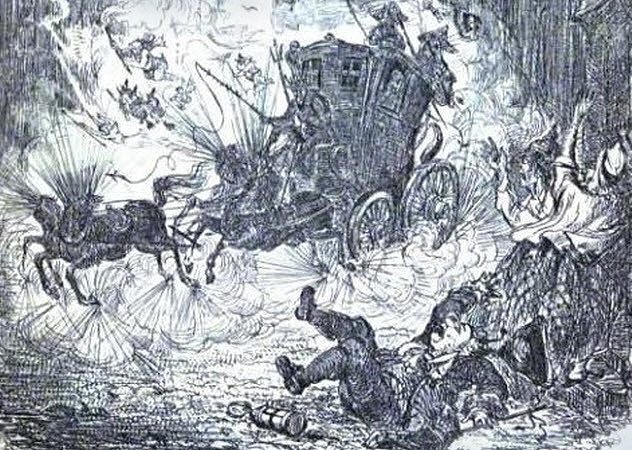
Thomas Weir was probably the last person anybody would suspect of being a witch. He was an elderly veteran of the English Civil War, a stern, religious man who was greatly respected in Edinburgh. In 1670, however, Weir suddenly suffered a kind of breakdown. He’d been harboring a lifetime of guilt and wasn’t nearly as saintly as everybody believed.
From the time his sister, Jane, was 16 until she was 50, Weir had repeatedly slept with her. He’d also had sex with his stepdaughter, his maid, and some mares and cows.[2] After the secret was leaked, Weir and his sister were arrested for incest. Jane not only confirmed her brother’s claims but told the authorities that she and her brother were witches.
Weir freely admitted to being a witch. He claimed that he’d slept with the Devil and that his walking stick was actually a wand. In the end, Jane was repentant about what she’d done. On the other hand, Weir refused to apologize. Both brother and sister were sentenced to death, although curiously, only Jane was convicted of witchcraft.
8 John Walsh

Not everybody who used magic in Early Modern Europe was considered evil. In England and Wales, for example, the “white witch” used its magic for good. Since the label “witch” was a negative one, these benevolent magicians went by other names, like cunning-man, wise woman, or conjuror. Though they might have been popular with the ordinary people, these folk healers and seers weren’t always safe from the law.
In August 1566, an English white witch named John Walsh was arrested and questioned in Essex about his powers. Walsh claimed that he was in contact with fairies and that he could tell when a person was bewitched. He also had a familiar, a supernatural creature said to help witches with their magic.
Walsh’s familiar would come to him in the shape of a dog, bird, or cloven-footed man. It could identify thieves and tell Walsh where the guilty had hidden what they’d stolen. Walsh swore that he never hurt anybody with his magic, but what ultimately happened to him is unknown. Witches were hanged rather than burned in England. Convictions were rare, so there is a chance that Walsh was acquitted and let go.[3]
7 Thomas Looten

In September 1659, a merchant named Thomas Looten was plagued with gossip that he’d killed a neighbor boy. Looten had given the boy a plum. When the boy died a few days later, some neighbors believed the plum was bewitched. To clear his name, Looten asked the town bailiff to arrest him and give him a trial.
Looten was apparently confident that the judges would take his side, saying he didn’t need a lawyer or counterevidence to prove his innocence. As it happened, things turned out the exact opposite. His neighbors testified against him, and a torturer claimed that there was a Devil’s mark on Looten’s body. After being strangled with a garrote, Looten told his interrogators that he attended sabbaths and earned his wealth from money that the Devil gave him.[4]
A witchcraft confession was exactly what the authorities wanted. A day after his confession, Looten died in jail from his wounds. His corpse was burned and then publicly displayed. To cover the rest of his court costs, Looten’s property was also seized and sold off.
6 Quiwe Baarsen
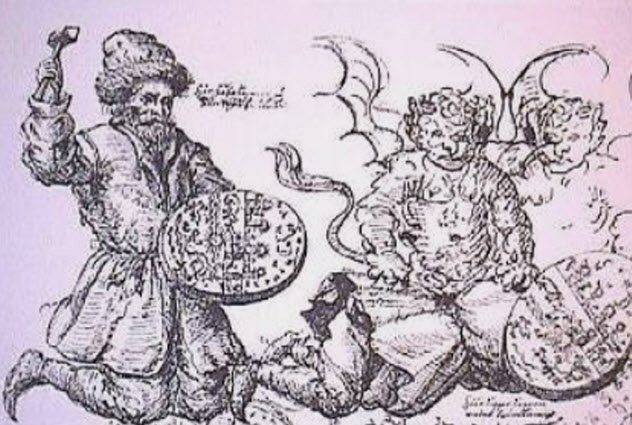
The Sami, the indigenous people of Scandinavia, had a rich tradition of shamanism. Since ancient times, Norwegians had consulted Sami shamans, who maintained that they could tell the future and travel out of their bodies. The shamans used a special drum for their rituals, which put them in a trance and allowed their souls to roam around.
In 1625, the shaman Quiwe Baarsen was paid by a Norwegian named Niels Jonsen to summon wind for a voyage to the village of Hasvag.[5] A while later, the wife of a man who left with Jonsen paid the shaman again, asking for good wind that would bring her husband’s ship home. This time, the spell went awry and Baarsen was afraid the wind was too strong.
Coincidentally, Jonsen and his crew drowned during a storm on their way back. Two years later, in May 1627, Baarsen was brought to trial by a court in Hasvag. He admitted to creating wind for Jonsen’s ship and explained how a Sami drum worked. The Christian court took Baarsen’s words as proof of witchcraft, ruling him responsible for the drownings and sending him off to be burned at the stake.
5 Andrew Man
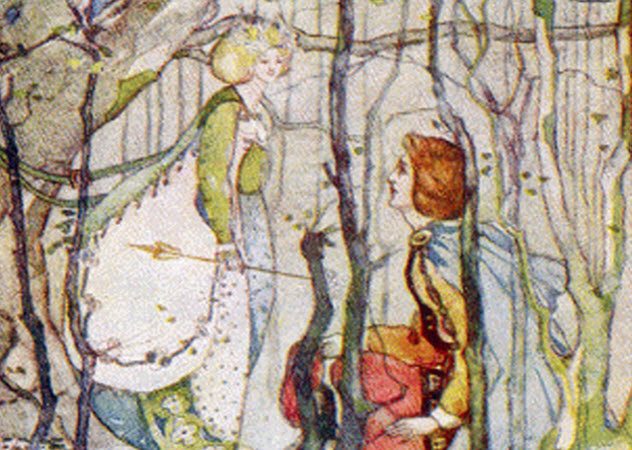
Today, fairies are regarded as harmless, fictional creatures, but some witchcraft interrogators believed that they were demons in disguise. Other interrogators figured that they were delusions caused by Satan. But whatever the cause, people who claimed to be involved with fairies were sometimes tried for witchcraft.
In Scotland, several witch trials mentioned a figure known as the Queen of Elphame, a fairy queen who had an angel husband named Christsonday. Andrew Man, an elderly man who went on trial in 1597, said that he had a sexual relationship with the fairy queen.[6] Man had first met the Queen 60 years earlier when he was a little boy. She later gave him the power to heal any animal or human.
Man had other magical powers as well, such as being able to steal a cow’s milk and tell the future. Christsonday acted as his familiar, and Man could summon the angel by uttering the word “Benedicite.” Man called Christsonday his lord and king, and he also said that he kissed Christsonday’s bottom. To the authorities, the bizarre story reeked of the Devil, and Man was burned for witchcraft.
4 Johannes Junius
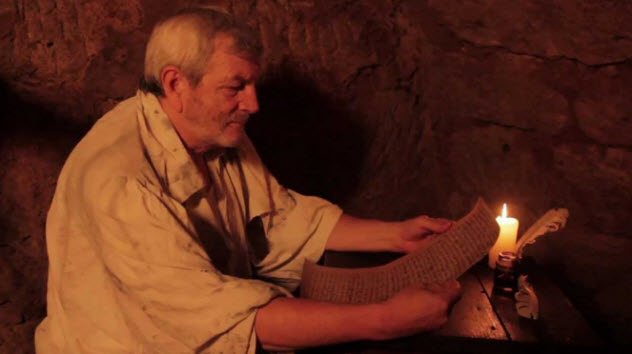
Between 1624 and 1631, nearly 300 people were burned for witchcraft in the German city of Bamberg. The city was gripped with paranoia, and even government officials were suspected of being witches. In June 1628, the mayor Johannes Junius was questioned after he was allegedly seen at some sabbaths.
As with many other witch trials, Junius swore he was innocent until he finally broke down after being tortured. According to his confession, Junius met a demon woman who turned into a goat and threatened to break his neck unless Junius gave himself up to her. The woman disappeared and came back with more demons, and Junius was forced to renounce God and worship Satan.
Junius took the new name of Krix, and the demon woman who converted him became his lover. The demon encouraged Junius to kill his children. But he refused, leading her to beat him on one occasion.[7]
A few weeks before his death at the stake, Junius sent his daughter a secret letter from prison. He said that his words were “sheer lies” and “made-up things” to keep himself from being tortured. He also mentioned his accusers, who admitted to lying and apologized to Junius before their own executions.
3 William Godfrey
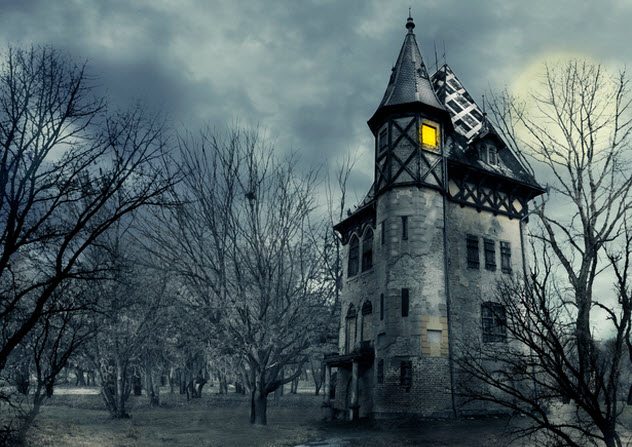
In 1609, the farmer William Godfrey rented out a house to John and Susan Barber in New Romney, England. While living there, the Barbers would hear inexplicable dripping and knocking sounds on the ceiling, making them afraid that the house was haunted. After having a baby, Susan swore that three familiars sent by Godfrey tried to steal her child. The Barbers ended up leaving the house. The Holtons, the next couple to take the house, experienced ghostly phenomena, too.
It wasn’t only Godfrey’s house that weirded out his neighbors. The Barbers had terrible luck after moving to a new house and suspected that Godfrey was the cause. Strangely, the Holtons’ son, who suddenly fell sick in 1614, died an hour after Godfrey paid a visit to the house one day. After years of reputedly bewitching people and animals, Godfrey’s neighbors finally took him to court in April 1617.
William Clarke, a man who thought Godfrey had bewitched his ducks, was the first to testify. The trial lasted months. During the wait, Clarke and Godfrey got into a brawl after Godfrey joked about bewitching Clarke’s mare. Other neighbors were brought in as witnesses, but the court ultimately acquitted Godfrey in February 1618. The only person charged with anything turned out to be Clarke, who was fined for assaulting Godfrey.[8]
2 Chonrad Stoeckhlin

Chonrad Stoeckhlin was a healer and horse wrangler who lived in the German town of Oberstdorf. In 1579, Stoeckhlin met a guardian angel who took him on a nocturnal journey to a “strange and distant place.” Stoeckhlin and his angel would go on these trips several times a year, accompanied by other travelers known as night phantoms. The night phantoms helped turn Stoeckhlin into a powerful healer, and he also learned how to identify witches.
Based on information from his night phantoms, Stoeckhlin accused a woman named Anna Enzensbergerin of being a witch in 1586. Enzensbergerin was arrested, but Stoeckhlin was also taken into custody. His stories about the night phantoms roused the authorities’ suspicion, and soon Stoeckhlin was being investigated as a witch, too.
During his trial, Stoeckhlin’s night phantoms were interpreted as witches. His guardian angel was seen as a demon, and the “strange and distant place” was theorized to be a sabbath. Furthermore, Enzensbergerin and another woman accused by Stoeckhlin confirmed that his mother was a witch.
After the usual bout of torture, Stoeckhlin confessed that everything was true. Ironically, the man who cried “witch” was sentenced to burn at the stake in January 1587.[9]
1 Louis Gaufridi
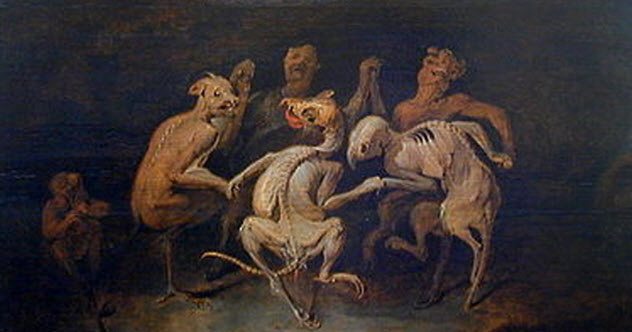
In 1609, the French priest Father Romillon became convinced that two nuns, Madeleine and Louise, were possessed by demons. The women would go into horrible convulsions and cried and screamed when Romillon attempted to exorcise them.
Madeleine told Romillon that a priest named Louis Gaufridi had raped her when she was nine years old and that the same man had used spells to fill her body with demons. Months passed without the nuns getting any better, and they made more accusations against Gaufridi when another priest exorcised them.
In February 1611, Gaufridi was arrested and interrogated. He admitted that he was a witch, explaining that he had found a magical book in his uncle’s possessions years earlier.[10] As he read the book, Gaufridi inadvertently summoned a demon. The demon made a deal with Gaufridi. In exchange for his body and soul, the demon would advance Gaufridi’s career and make any woman he wanted fall in love with him.
Madeleine was questioned as well, and both she and Gaufridi said they attended sabbaths together. In April the same year, Gaufridi was strangled and burned at the stake. Unsurprisingly, Madeleine was eventually accused of witchcraft herself. She was sentenced to life imprisonment but was let out early after serving 10 years.
Tristan Shaw runs a blog called Bizarre and Grotesque, where he writes about crime, folklore, and unsolved mysteries.
Read more strange facts about witch trials on Top 10 Strange And Terrifying Witch Trials Throughout History and 10 Brutal Witch Trials Focused On Children.
